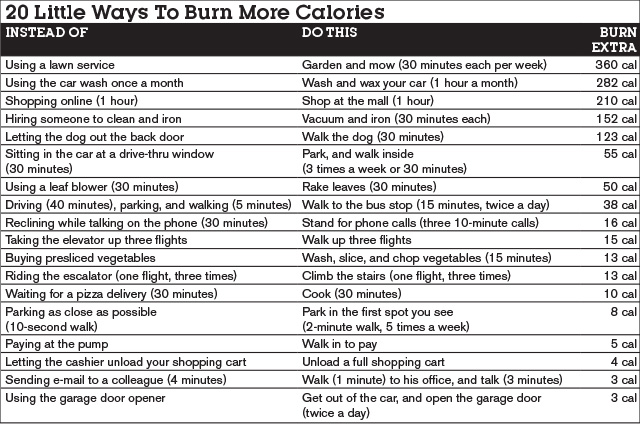How to Lose Weight Without Going Hungry
Many people know they need to lose weight in order to maintain a healthy lifestyle, but they dread the thought of going on a diet because they don't want to constantly feel hungry. However, with a bit of new knowledge and effort on your part, you can lose weight without feeling hungry all the time.
Steps
Method 1 Choosing Satisfying Foods
-
1
Make your calories count. Calorie counting is an important part of weight control but does nothing to help the body if the calories are of no nutritional value. Make your calories count by only eating nutritious foods — that way you can eat plenty while fueling your body with the nutrients it needs to stay healthy.
- For example, there are 526 calories in a small order (227 grams) of fries at a typical fast food place. 227 grams (8 oz) of chicken breast, however, is only 390 calories.[1] Chicken breast is much higher in protein (over 35 grams higher), which will help keep your bones, muscles, cartilage, skin, and blood healthy and functioning. Many vitamins like Vitamin B, Iron, Vitamin C, and Magnesium are also found in foods high in protein.
- Often when people feel hungry it is because they aren't getting what they need nutritionally. Try making sure you are getting enough protein, carbohydrates, and healthy fat. The average healthy diet consists of 40% protein, 40% carbohydrates, and 20% fat.
-
2
Learn the difference between good and bad carbohydrates. Low glycemic foods and foods high in fiber will help you feel full longer and prevent hunger because they are digested more slowly than refined grains and help keep your blood sugar even.[2][3] Adversely, carbohydrates that are high in starch send signals to the body to store fat. High-starch (bad) carbs should be avoided as much as possible if you want to curb the spikes in your appetite.
- Instead of high-glycemic foods like white rice, instant oatmeal, cornflakes, white bread, baked potatoes, and corn, try lower-glycemic food like brown rice, steel-cut oat, bran flakes, and whole-grain bread.[4]
-
3
Choose foods that are known for their filling qualities. Make a list of all of the foods that you can incorporate into your daily diet. Think about how you might use those foods to alter some of your favorite recipes and keep them in mind on your next trip to the grocery store.
- Filling vegetables that are low in calories include: spinach, broccoli, tomato, and carrots. Incorporate vegetables into salads and as side dishes; try to include some in every meal. Produce will help enrich your diet with essential vitamins and minerals.
- Filling fruits that are low in calories include berries and apples. Use fresh fruit as your go-to snack throughout the day to help fill you up while keeping calories down
- Filling sources of dairy include fat-free milk and fat-free cottage cheese.
- Filling carbohydrates that are healthy include: brown rice, quinoa, and whole wheat bread.
- Good sources of protein include: grilled salmon, chicken breast, black beans, and red kidney beans.[5]
- Stay clear of soda and sweetened drinks. Instead drink plenty of water. Oftentimes what you initially interpret as hunger is your body’s way of telling you you’re dehydrated[6] — drinking plenty of water will curb those feelings and reduce your hunger significantly.
- Here is a list of recipes to help you on your weight loss journey: http://www.hsph.harvard.edu/nutritionsource/recipes-2/home-cooking/#vegetable-recipes.
Method 2 Creating New Eating Habits
- 1 Remove all the junk food from your house. If it is not available, you will be less tempted.
-
2
Have a nutritious breakfast every morning[7]. Fueling yourself properly at the beginning of the day ensures that you don’t put your body in starvation mode by lunchtime. Starvation mode essentially means that your body holds on to fat, even if you don’t eat much. It also ensures that when you do eat, you will overindulge to compensate.
- Try to make sure your breakfast is balanced nutritionally, including a good source of protein. Many popular breakfasts are very carbohydrate-heavy with little protein, making you hungry much sooner.
- 3 Learn to eat at a leisurely pace. Make sure to take at least 20 minutes to eat your meal or snack. Eating slowly gives the brain a chance to be satisfied.[8] Slow eating will help you avoid eating more than is necessary to feel full. Take the time to appreciate the foods that you are eating. You will receive more satisfaction out of your meal by savoring it than if you quickly scarf it down.
-
4
Eat small meals several times a day. Try replacing three large meals a day with six smaller meals. There is evidence that suggests an association between more eating occasions and lower BMI.[9] The theory is that eating more frequently will help keep you fuller throughout your day because your energy levels will be more stable, as will your blood sugar levels.
- Try having protein at meals and snacks. This will help keep you full for longer periods of time. Beans, lean meats, and nuts are effective for this purpose.
- Consider eating a snack like cottage cheese before bed. Your body takes longer to break down the casein protein contained in cottage cheese; therefore, your metabolism will be working all night.
-
5
Replace dessert with fruit. Treating yourself with junk food once a week can undo all of your week’s hard work. One slice of cheesecake, for example, can be over 1,000 calories.[10] If you really need something sweet, try eating a piece of fruit instead.
- Dessert usually consists of bad carbohydrates that also leave you feeling hungry quickly.
- If you want a frozen treat, try freezing grapes or blueberries. You can also mash a banana and add a teaspoon of honey for an ice cream-like treat.
-
6
Avoid eating out: Restaurants focus on serving delicious food, not healthy food. Besides being tempted to order something you know is unhealthy, you may order something you think is healthy only to consume more calories than you thought.
- For example, the Garlic Rosemary Chicken at Olive Garden is 540 calories;[11] however, when you add the sides, you could end up eating over 1,000 calories for a meal without knowing it.
Method 3 Understanding How Many Calories You Should Consume
-
1
Know what is healthy for your body. Calculate your Body Mass Index (BMI) in order to help give you an estimate of whether your weight is unhealthy. A BMI is a measurement of body fat based on height and weight. Use a calculator online to find yours: http://www.bmi-calculator.net/. Note that while BMI is not a perfect judge of weight (it has trouble incorporating muscle mass), it is generally accepted as a good estimator. If you are below normal weight, you should not attempt to lose weight.
- If your BMI is 18.5 or less, you are considered underweight.
- If your BMI is between 18.5 and 24.99, you are considered normal weight.
- If your BMI is between 25 and 29.99, you are considered overweight.
- If your BMI is between 30 and 34.99, you are considered obese (class 1).
- If your BMI is between 35 and 39.99, you are considered obese (class 2).
- If your BMI is 40 or greater, you are considered morbidly obese.
-
2
Calculate how many calories you can eat. In order to lose weight it helps to know your Basal Metabolic Rate (BMR). Your BMR tells you how many calories you burn a day just by being alive. It depends on your height, weight, age, and gender. Use a calculator online to find yours: http://www.bmi-calculator.net/bmr-calculator/
- If you want to calculate your BMR by hand, the formula is as follows: For women: BMR = 655 + ( 4.35 x weight in pounds ) + ( 4.7 x height in inches ) - ( 4.7 x age in years ). For men: BMR = 66 + ( 6.23 x weight in pounds ) + ( 12.7 x height in inches ) - ( 6.8 x age in year ).[12]
- This number varies widely by person. For example, a 50 year old woman who is 5 feet tall and weighs 100 pounds only burns 1,137 calories by being alive. In contrast, a 20 year old man who is 6 feet tall and 200 pounds burns 2,090 calories just by being alive.
-
3
Adjust your BMR according to your activity level. The number of calories your body actually burns every day, however, varies based on how active you are. The more active you are on a daily basis, the faster your metabolism is, and the more calories your body burns. Use the Harris Benedict Equation to calculate how many calories your body truly burns in one day.[13] This final number tells you how many calories you need to eat to maintain your current weight.
- If you are sedentary (little or no exercise) : Calorie-Calculation = BMR x 1.2
- If you are lightly active (light exercise/sports 1-3 days/week) : Calorie-Calculation = BMR x 1.375
- If you are moderately active (moderate exercise/sports 3-5 days/week) : Calorie-Calculation = BMR x 1.55
- If you are very active (hard exercise/sports 6-7 days a week) : Calorie-Calculation = BMR x 1.725
- If you are extra active (very hard exercise/sports & physical job or 2x training) : Calorie-Calculation = BMR x 1.9
-
4
Calculate how many calories you need to lose weight. To lose weight, you must output more calories than you input. There are 3500 calories in a pound of fat so for every 3500 calories you net output, you lose 1 pound. Aim to reduce your current caloric intake by 500 calories a day, never allowing fewer than 1200 calories per day if you are a woman and 1500 calories a day if you are a man. You may choose to eat 250 calories less and burn 250 calories with exercise to meet this goal.
- Note that the less you weigh, the longer it will take to lose weight in a healthy way. Remain patient.
-
Setting Short Term Weight Loss Goals
Setting short term weight loss goals is very important. A couple
-
Losing Weight In Time For Summer Does Not Have To Be Difficult
Welcome to part three of my tips and techniques articles which will a
-
Weight loss tip #126 – Eat some fruits or salad before going to a party
-
Red, Yellow, Green Light Foods
Red light, yellow light, green light foods. Lists are amazing t
-
Obeying This Law of Nature to avoid weight gain
If you want to ensure a long life and healthy future for your ki
-
The 5-Day-A-Month Diet That Can Lead To Serious Weight Loss
An effective diet you need to follow only 5 days a month? Sounds like
- DON'T MISS
- Is Weight Reduction Surgery the Right Choice?
- Weight Loss Tip #101 – Eat a light dinner
- Get The Weight Loss Tips That Work
- How to Lose 10 Pounds in 2 Weeks
- Benefits of drinking water for weight loss
- Understanding The Importance Of Weight Training
- Facts about Atkins
- Facts about Fad Diets
- Weight Loss Tip #39 – Lose weight with eggs
- Try These Easy Weight Loss Tips




